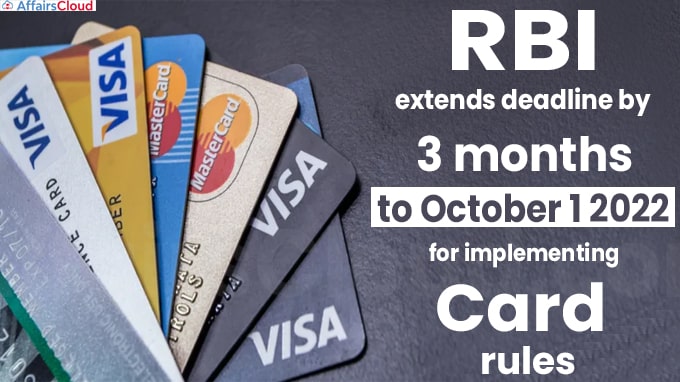
On June 21, 2022, the Reserve Bank of India (RBI) extended the timeline for implementation of certain provisions of the master directions it issued on issuance of debit cards and credit cards by three months from July 1, 2022 to October 1, 2022. Click here to read RBI Directions on Credit and Debit Cards- Issuance and Conduct Directions, 2022
This extension will provide more time to card issuers to implement the following three provisions as part of RBI’s new regulatory guidelines for issuing credit and debit cards:
i.The first provision is that the card issuers will have to seek one-time password (OTP)-based consent from the cardholder for activating a credit card, if the same has not been activated by the customer for more than 30 days from the date of issuance.
- And, if no consent is granted by the customer, card-issuers will have to close the credit card account without any cost to the customer within seven working days from the date of seeking confirmation from the customer.
ii.The second provision stated that card-issuers will have to ensure that the credit limit as sanctioned and advised to the cardholder is not breached at any point in time without seeking explicit consent from the cardholder.
iii.As per third provision, issuers will not capitalize on unpaid charges for compounding of interest.
RBI spent more to print Rs20, Rs50, Rs100, Rs200 notes in FY22
According to information sourced through RTI (Right to Information) from the Bharatiya Reserve Bank Note Mudran Private Limited (BRBNMPL) , the selling price of bank notes in the denomination of Rs 20, Rs 50, Rs 100 and Rs 200 has increased in FY22 while for Rs 500, it remained unchanged.
- Selling price refers to the price at which printing presses supply paper currency to RBI.
Key Points:
i.Selling price for 1,000 pieces of Rs 50 recorded a maximum increase of around 23% in FY22 over FY21, while that of Rs 20 registered the lowest increase of over 1%.
ii.The notes of Rs 500 denomination are the highest in terms of volume (34.9% of all denomination) among all the paper notes in circulation, and also in terms of value (73.3% of value of all denomination).
iii.The overall cost of printing currency in FY22 was the second highest, after an all-time high of around Rs 8,000 crore during the year of demonetization (2016-17).
iii.According to RBI’s annual report, BRBNMPL achieved production of 13,350 million pieces of banknotes in FY22.
Recent Related News:
i.On March 31, 2022, RBI for the second time extended the timeline for the implementation of cassette swap in all ATMs (Automated teller machine) by 1 year till March 31, 2023. This extension is due to the requests received by RBI from various banks and Indian Banks’ Association (IBA) citing various constraints in meeting the timeline.
ii.In accordance with the Reserve Bank of India (RBI) data, a total of 27 Scheduled Commercial Banks (SCBs) and Financial Institutions (FIs) have reported 96 cases of fraud, worth Rs 34,097 crore in the first nine months of FY22 (April-December 2021).
Static Info:
i.There are four printing presses in India, of which two are owned by the RBI through its wholly owned subsidiary, Bharatiya Reserve Bank Note Mudran Private Limited (BRBNMPL), while the remaining two come under the ownership of the Central government, operated through its wholly owned company, Security Printing & Minting Corporation of India Limited (SPMCIL).
ii.BRBNMPL presses are situated in Mysuru (Karnataka) and Salboni (West Bengal) while SPMCIL presses are located at Nasik (Maharashtra) and Dewas (Madhya Pradesh).
iii.Colour Shift Intaglio Ink (CSII), a security feature used in Indian banknotes that was imported earlier, is now being indigenously manufactured at Varnika, the ink manufacturing unit at BRBNMPL, Mysuru.




